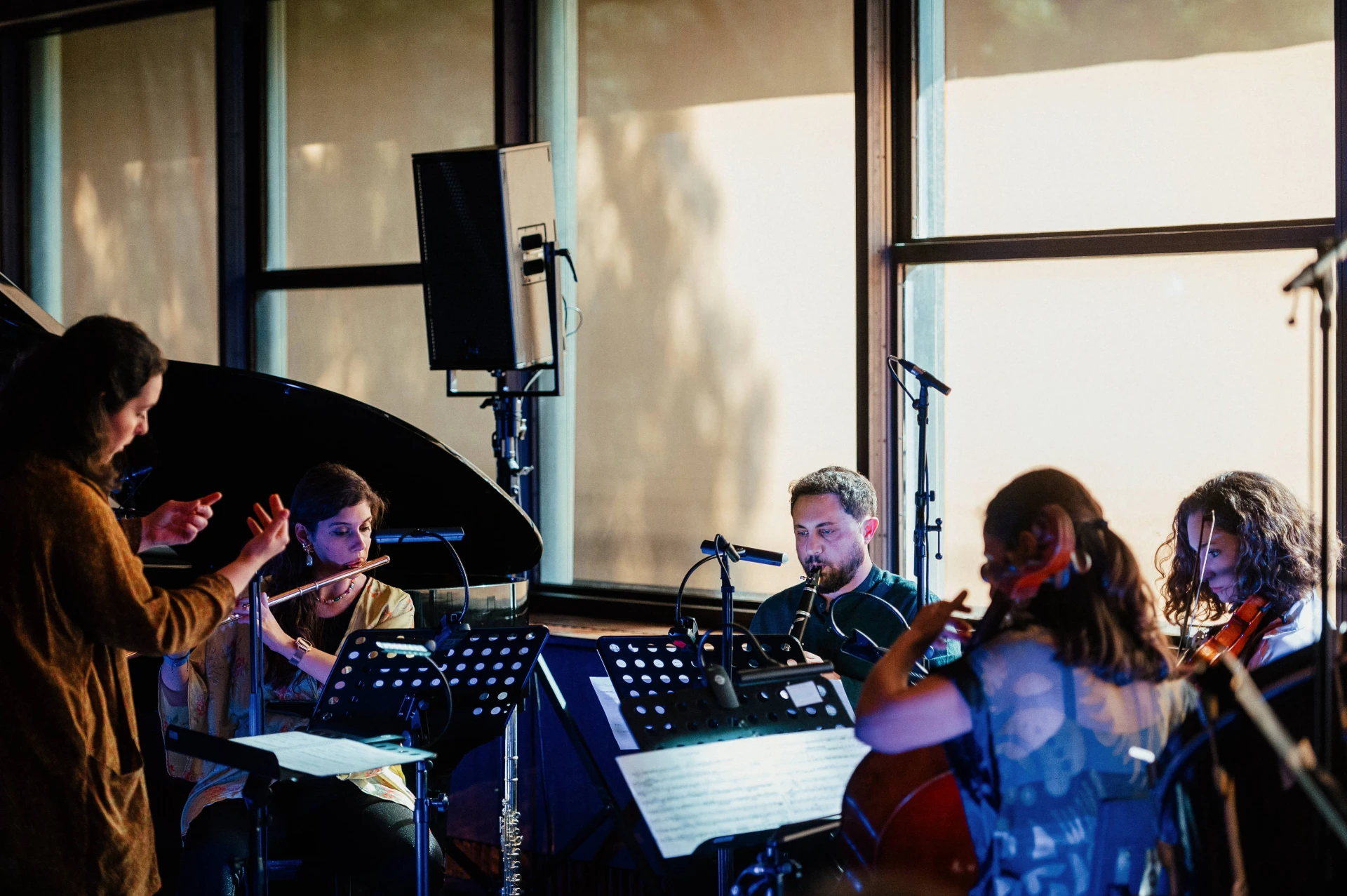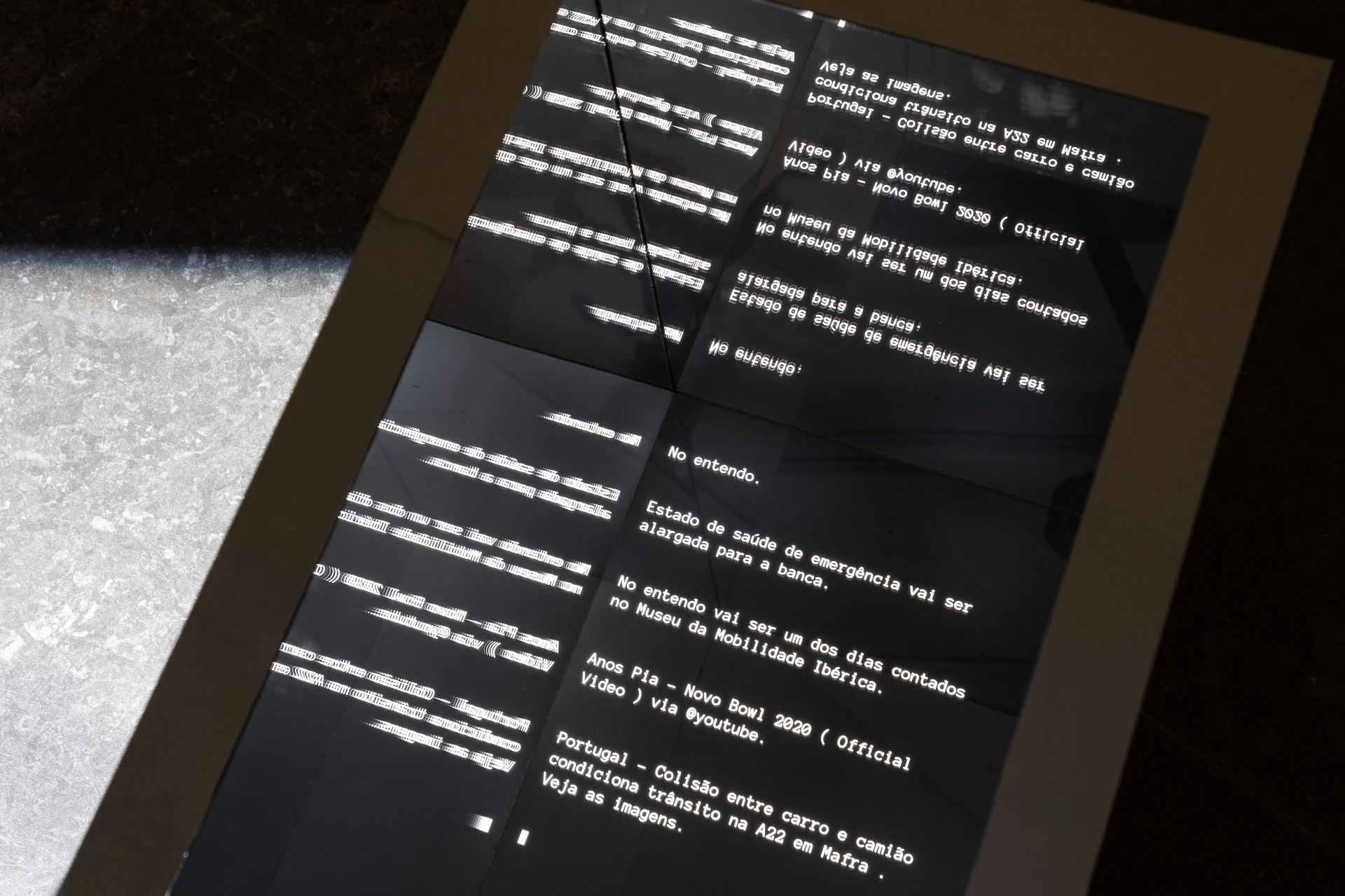Mafalda Ruão: You claim to have a desire to explore and understand the world through creation. When did this desire arise, and what motivated your artistic production?
Rudolfo Quintas: One of the biggest reasons that motivates me to create, almost obsessively and continuously, is the connection of the creative process to life as a form of self-discovery. This manifested itself very fluidly when I participated in my first drawing exhibitions at the age of seven or when I organized rap dance parties at school. I currently see artistic creation as a work of interpreting reality, which we strip away before replacing transformed layers. At its origin lies spiritual energy, in the sense that it goes beyond the cultural, academic, or mercantile understanding of art. I compare it to a child who, through play, explores and acquires knowledge about the world, and to an astronaut who launches into the unexplored. In wandering through these forms of knowledge, adding aesthetic expression, reside many reasons for the artistic impulse.
MR: True to this plurality of expression, your work combines art with science, philosophy, and spiritualism. Where does this broad interest come from, and how do these nearly opposing fields manifest themselves in your performance?
RQ: From a conscious and intentional perspective, this plurality comes from wanting to experience what it's like to live. I find the answer to this by existing in the most symbiotic way possible between body/mind/spirit. Basically, there is a desire to anchor the subjective and one's own imagination with the community, and finally, an investment in artistic and technical-scientific training and studies to develop greater cerebral flexibility in interpreting the world. I've always challenged the horizons of possibilities through non-obvious choices: before I was 20, I had already run a local radio station; I nearly succeeded in rebuilding a school in Timor; I was a national kickboxing runner-up... This expanded field of interests arose from the desire to believe that there is something beyond the reality that surrounds me, and that I could support this idea by observing it from different perspectives. On the other hand, I'm fascinated by the fact that an artistic project can be a point of dialogue across various fields of knowledge: psychology, neuroscience, computing, social sciences, linguistics... An example of this is the generative, interactive, and immersive audiovisual installation "Black Hole" (2018), which questions the limits of physical and cognitive experience. Working in co-creation with blind communities, the goal was to create experiences with this community, which tends to be excluded, that expand our own. In this case, upon entering a kind of "black hole," visitors gradually lost their fixed visual reference, transforming the encounter into a participatory dialogue, whose visual and audio elements were animated by body movement, creating a space of freedom and exploration. Another example was the artistic research project "O Ato Ciênsivel" (2023), developed by a multidisciplinary team to recover memories of elderly people. Exposed to an odorous experience, participants reacted with memories that were translated into images by AI software.
MR: Until 2024, when you received the Norberto Fernandes award, given by Altice, in the art and technology category, with the work "Sentiment Data Painting - World News 2024". What motivated you?
RQ: I believe an artist's motivation is a revolutionary spirit, strongly fueled by personal issues. With "Sentiment Data Paintings", I wanted to address the issue of mental health. My mother suffered from bipolar disorder her entire life, and I went through many episodes of depression trying to understand it. When I was young, these revealed themselves in the violence of my paintings, which I ended up destroying as a form of catharsis. Hence, this desire to address this issue: having mental health is not a given. We not only need to consciously exercise it, but also understand that there are many influencing factors. The overload of negative news is one of them. And in a time when news are on our phones and we are constantly connected, how big is this psychological impact on our mental health?
MR: This is a generative digital painting. What does that mean?
RQ: "Data painting" refers to a painting created from data (information). Generative painting characterizes a dynamic painting, where each moment in time is formally unique in visual terms and never repeats itself. In short, these paintings read online newspapers, analyse the sentiment of the news through an AI model, and paint accordingly: positive news is assigned warm colours, negative news cool colours, and neutral news neutral colours. The result is images that echo the sentiment of the phrases published daily by the media.
MR: It's fair to say that you go far beyond the aestheticization of the current reality. Can we say that this is a reflection on the ethics of AI?
RQ: I began using programming as a means of artistic creation in the early 2000s, at a time when I was thinking about the impact of AI on the world, and obviously on creation. Working with AI as a tool and theme wasn't born from an attraction to the generative aesthetic aspect, but rather from developing a critical perspective from the machine itself, exposing its weaknesses and risks. Such as automation processes, the cross-referencing of metadata with emotional profiles (Emotional AI), or the removal of decision-making and final oversight from humans (autonomous AI systems or AI Agents). This is what I set out to explore with the digital work "KESYTONE I,II,III,IV" (2019), which learned to read and write Portuguese autonomously and thus developed its own ideas based on news published daily on social media. In this context, one of the issues I consider impossible to automate is emotions. For example, "Trump wins the election" / "Trump loses the election" will clearly provoke different feelings on different people, yet current AI models will analyse one piece of news as positive and the other as negative. "Sentiment Data Painting" confronts us with this and allows us to reflect: we can even consider AI neutral, because there's no human behind the work determining whether the news is negative or positive based on their value beliefs, but why did the AI decide that would be the score? And is this type of analysis used on me? Is it right for a machine to create my emotional profile, without my permission, and use it opaquely in systems with which I interact? Emotions are highly subjective and contextual, something AI fails to recognize. However, we are integrating these technologies without adequate consideration of their ethical and emotional impact, and the imbalance they cause in the natural environment. We're talking about the same ethical responsibility that influences human emotions and, thus, can manipulate behaviour and interfere with mental health.
MR: So, how do we interpret the “results” of the work considering the subjectivity of readings of a global event?
RQ: There are two reflections. One is the AI bias, as I explained previously; the other is the reflection on mental health. The results of the study show a tendency to write news with negative sentiment. This is an objective result that doesn't change with subjectivity, or the perspective from which we discuss the subject. Constantly reporting murders, robberies, or wars alters our perception of the world, triggering a sense of danger and potentially promoting mental health imbalances. My argument is that mental health needs a healthy ecosystem to remain healthy. Regarding AI neutrality, we should always be suspicious.
MR: If the work derives from the analysis of news published globally, then we are confronted with the crucial role of journalism in the global fabric. What are your reflections on this fact?
RQ: It's essential to reflect on this role. We can have journalism in authoritarian systems, but does censorship journalism serve us? We can have journalism in a democracy, but if you're held hostage by attention capitalism, does it serve us? Journalism isn't a science, but it seeks to inform citizens about the truth of events. My conclusion is that pathology will eventually emerge if the media's primary focus is tragedy. To avoid this, many of us intuit that we must disconnect from the news, which is, in a way, also a tragic outcome.
MR: Could this artistic practice and the audience's interaction with works that invoke technological themes help combat fears and ignorance regarding new technologies and AI?
RQ: Not necessarily. We can find examples of this when we have artistic practices with a critical or investigative conceptual component that propose reflection and a critical sense on these themes. However, the simple act of visiting an exhibition whose images were created by Generative Artificial Intelligence does not in itself help us engage in critical dialogue. I also believe the opposite—an artistic project created with pen and paper can help combat these blockages. And with that, I almost uncover a project still in its embryonic stage...
MR: Shall we leave it open? What's next?
RQ: Civil engineering and project management. In 2016, I purchased an industrial office in Marvila to fulfil a long-held dream: to have a studio and project space that would allow me to occasionally host projects from other artists—especially in computer art and more experimental performing arts—and to continue an artist residency project in computer art that I started in 2017, Temp Studio. Creative processes will flow, but exhibitions will be postponed until the second half of 2026.

 [A] Chantal Akerman, [L] MAC-CCB-0028w.jpg)
